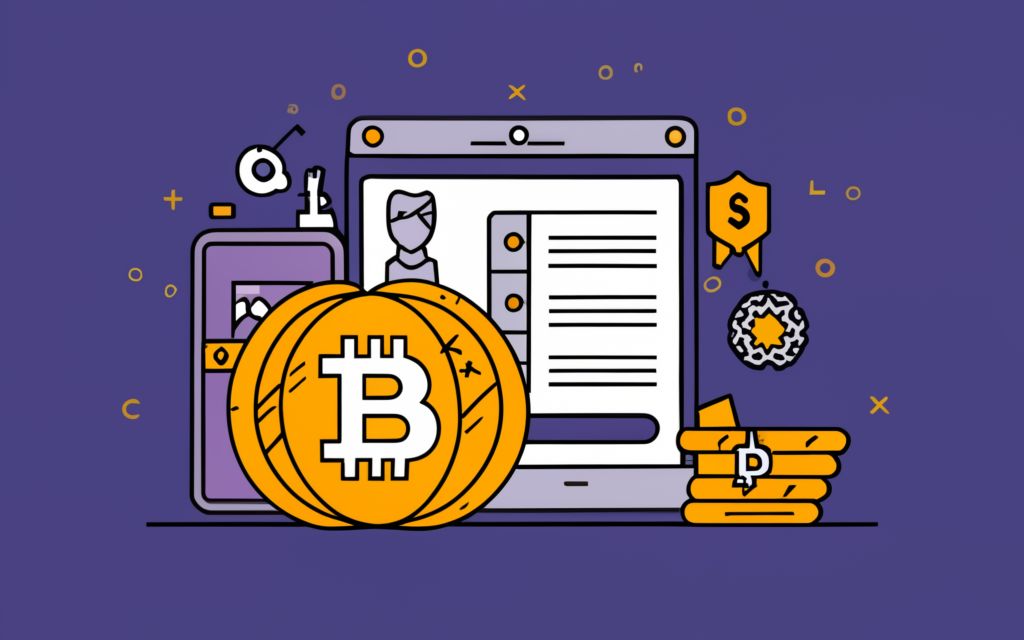Crypto Exchanges and Security: How to Choose Wisely

The Risks Inherent to Cryptocurrency
As a disruptive financial innovation, cryptocurrencies carry certain intrinsic risks related to their market volatility, lack of regulatory oversight, and irreversibility of blockchain transactions. Speculation feeds price instability while lack of accountability allows scams and fraud to proliferate. But perhaps the biggest danger to crypto participants comes from exchange hacks resulting in billions stolen. Hence, choosing secure trading platforms is imperative.
Grasping Crypto Security Essentials
Before selecting any exchange, users should learn fundamentals like utilizing cold storage, installing antivirus software, protecting login credentials via password managers and 2FA, and avoiding phishing links masquerading as legitimate websites. Mastering security basics helps make informed platform decisions. Setting up hardware wallets prior to transferring funds also guarantees control over assets.
Surveying the Threat Landscape
From hacking collectives like Lazarus Group exploiting vulnerabilities to rug pulls undermining project legitimacy, risks abound. Major exchange breaches remain frequent, exposing limitations of hot wallet custodianship. Ethereum’s 2016 DAO debacle revealed smart contract exposures that still persist around cross-chain bridges and oracles. Informational hazards via phishing links and social engineering tactics must stay top-of-mind when assessing platforms.
Vetting Exchange Cybersecurity Postures
Users should scrutinize exchange transparency reports revealing past breach statistics, implemented security features, and responsiveness. Checking for proof-of-reserves demonstrates adequate collateralization. Reviewing measures like mandatory 2FA, address whitelisting, bug bounties, and penetration testing indicates architectural robustness. Monitoring whether platforms meet regulatory standards provides accountability. Extra skepticism should apply to newer entrants without proven track records.
Diversification as a Risk Mitigation Tactic
Investors can moderate risk through distributing assets across different exchanges according to clear percentage allocations. No more than 10% of funds should position on unproven platforms, whereas market leaders can receive higher ratios. Maintaining an indexed benchmark portfolio similar to broader market cap weightings helps smooth volatility. Savvy crypto participants should also diversify across assets uncorrelated to crypto like stocks, bonds, or real estate.
Elevating Password Hygiene
Despite being technically mundane, proper password security remains a crucial defense barrier given most people reuse the same credentials across platforms. Users should string random words together with special characters and numbers to boost entropy. Enabling two-factor authentication prevents intruders from exploiting guessed passwords. Saving credentials via offline password managers rather than browser autofill removes remote compromise risks.
Understanding Exchange Security Features
Exchanges implement varied features either mandated or optional to harden platform security. Address whitelisting prevents intruders withdrawing funds to unknown wallets. IP whitelisting blocks unrecognized device logins. Universal 2FA blocks credential stuffing attacks. Volume-tiered withdrawal delays stifle theft potential. Email and phone ownership validation hinders account takeovers. And front-end DDoS protection prevents denial of service.
Assessing Insurance and Asset Recoverability
Checking whether an exchange insures custodied assets through underwriters like Lloyd’s of London assures compensation for losses due to compromise. Coverage tiers vary – Kraken offers $100M while Coinbase stewards over $250M for users. Some cede portions of trading fees into a Secure Asset Fund usable if assets are stolen. Although insurance restores holdings after incidents, examining preventative measures proves wisest.
Auditing Exchange Reserves
Reputable exchanges submit to regular proof-of-reserves attestations where external auditors certify custodied assets sufficiently collateralize trade liabilities, ensuring a 1:1 ratio between holdings and user balances. Reserves held at credit institutions also fall under regulatory asset protection schemes within their operating jurisdictions. Mandatory reserves help prevent fractional reserve lending or hidden shortfalls quietly covered by company holdings.
Understanding Regulatory Coverage
Abiding by financial regulations requires stringent security and consumer protection standards. Exchanges regulated as money services businesses enact stringent KYC procedures, while those meeting securities statutes mandate investor safeguards. Platforms seeking licenses signal preparedness complying with capital requirements law enforcement coordination mandates. Certain regimes like the EU’s MiCA even specify cybersecurity protocols. However, regulation moves slowly so self-regulation remains critical.
Curbing Risk Appetite
Crypto participants should scale positions on niche platforms according to risk tolerance levels only after core holdings reside with market leaders. Conservative users minimize small exchange exposure, whereas aggressive traders accept heightened counterparty risk chasing outsized yields. Either way, traders should enable protective measures like setting withdrawal address whitelists, restricting IP access, funneling funds via intermediate wallets first, and monitoring account activity.
Protecting One’s Self Through Education
Expanding one’s own understanding of crypto security threats enables prudent decisioning and scam avoidance. Government agencies detail emerging risks in consumer advisories. Leading exchanges offer dedicated security education covering fraud techniques used to steal from users. Industry experts also frequently highlight new threats on social media. Staying updated better equips users to steer clear of dangerous platforms and reckless practices.
Navigating the Security Minefield
While promises of fantastic wealth proliferate in crypto, realizing gains safely depends on selecting secure trading venues. Scrutinizing transparency reports, insurance coverage, implemented protections, breach track records and regulatory compliance allows confident platform assessment. Users can then moderate positions across diversified exchanges according to risk tolerance. Avoiding ignorance of security threats lets participants balance risks and rewards.
FAQs
What should I look for in a cryptocurrency exchange’s security?
Key attributes proving solid security posture include mandatory universal 2FA, address whitelisting, 95%+ cold storage of reserves, KYC verification enforcement, industry-standard cryptography for keys and passwords, professional penetration testing, bounties for discovering vulnerabilities, respected regulatory standing, and third-party financial auditing.
Which exchanges have the best security reputations?
Platforms like Coinbase, Kraken, Gemini, Crypto.com, Binance, and FTX established strong security reputations through proof-of-reserves assurance, dedicated bug bounty programs, clear regulatory compliance, seal acquisitions like SOC2 certification, transparent breach reporting, and dedicated investor security funds.
How does regulation impact exchange security?
Abiding by financial regulation often requires more stringent security standards protecting investors and their assets through required measures like mandatory KYC, capitalization minimums, coordination frameworks with law enforcement, and even protocols like EMTA Analysis designed specifically to govern cryptocurrency market integrity.
What should I do if my assets are stolen from an exchange?
First save any evidence like screenshots of unauthorized withdrawals. File an incident report through the exchange’s support portal and notify relevant authorities if sizable assets were lost. Check if the exchange carries insurance for user funds through underwriters like Lloyd’s to ascertain if compensation applies. Avoid further platform use until a root cause analysis is provided.
What security experts are cryptocurrency leaders trusting?
Organizations like the Crypto Ratings Council pioneered frameworks analyzing asset risks, exchange security, and fraud potentials to guide investor decisioning. Non-profits like CryptoUK advocate regulatory balance benefiting consumers. And venture firms like Paradigm fund emerging crypto security startups protecting decentralized systems.
How do hardware wallets like Ledger help security?
These physical devices provide cold storage through securing private keys offline and requiring manual authorization for signed transactions. Keys never risk comprises by connectivity gaps. Random seed key generation resists brute force attacks. Special chips block infiltration. Supply chain breaches still threaten delivery channels, hence buyers must order directly from vendors.
What metrics help benchmark asset risk on exchanges?
Volatility gauges like price range percentages reveal fluctuation hazards. Market beta measures asset correlation to overall market moves. Risk adjusted return ratios like Sharpe/Sortino Ratios quantify hedging effects. Always use stop-losses on open positions with enforced liquidation thresholds dictated by historical volatility.
Hi, I'm Benito Hearne. I'm 51 years old and a P2E expert. I used to play cybersports professionally, but now I'm retired (for the most part). These days, I mostly just enjoy spending time with my family and tinkering with gadgets in my workshop.


